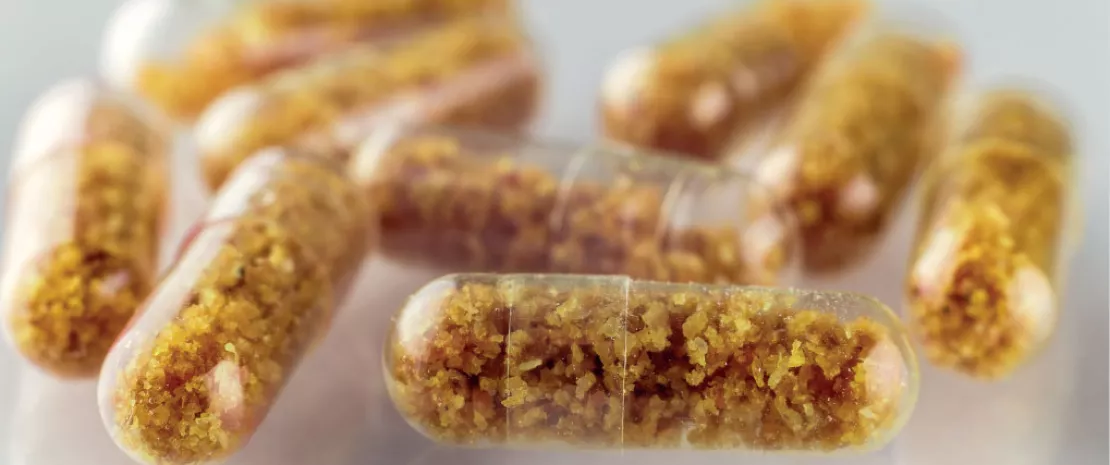Fecal transplant: a promising route?
This will surprise more than one person: using stool for therapeutic purposes did not start yesterday.12 But recent discoveries regarding the involvement of the intestinal bacteria in metabolic diseases have opened up a new field of research which aims to develop fecal transplants that are more targeted and better accepted clinically and psychologically
- Learn all about microbiota
- Microbiota and related conditions
- Act on your microbiota
- Publications
- About the Institute
Healthcare professionals section
Find here your dedicated section
Sources
This article is based on scientific information
Sections

About this article
Fecal Microbiota Transplant (FMT): a name which is redolent of innovation and the biotech world. However, it was used 1,700 years ago in China, where diarrhea was treated by drinking a broth of fermented stools–the aptly named “yellow soup”. In the Middle Ages, the Bedouins protected themselves against dysentery (a bacterial infection causing serious diarrhea) by ingesting the droppings of their camels. The first modern fecal transplants were performed in the 1950s to combat Clostridium difficile infection, a bacterium which takes advantage of the microbial imbalance triggered by an antibiotic treatment to proliferate within the intestinal flora. We had to wait until the 2000s for FMT to be taken into account in the treatment of metabolic diseases, and in the cages of laboratory rodents.
Conclusive first steps
But trials in humans in this field are just beginning. The first study was carried out in 2012 in Dutch patients: half of them received the stools of healthy donors; the others received their own stools (placebo group). The donor stools were analyzed carefully to eliminate any risk of infection by viruses, parasites or harmful bacteria. Then the transplant took place over a thirty-minute period by injection into a tube, introduced into the noses of patients, which opened out into the small intestine. Six weeks later, those who received “healthy” stools exhibited improved insulin sensitivity and increased numbers of bacteria producing metabolically beneficial butyric acid. This first attempt can thus be counted as a success!
A modus operandi to be refined
The use of FMT in metabolic diseases still has a long way to go, with manychallenges to be faced: the medical history and the microbiotas of donors must be irreproachable to avoid any transmission of diseases and strains chosen in an appropriate manner and in the right quantity. Other issues: how will the donor flora be welcomed by that of the recipient? Will a single injection be sufficient for long-term colonization? Finally, a considerable psychological limitation: the inevitable repulsion of some patients in the face of this still little-known treatment, unless FMT becomes a common therapeutic practice, knowing that its spectrum of potential applications could extend to multiple sclerosis, Parkinson’s Disease or chronic fatigue syndrome. Who knows? Perhaps the future will see the advent of stool banks and capsules.












